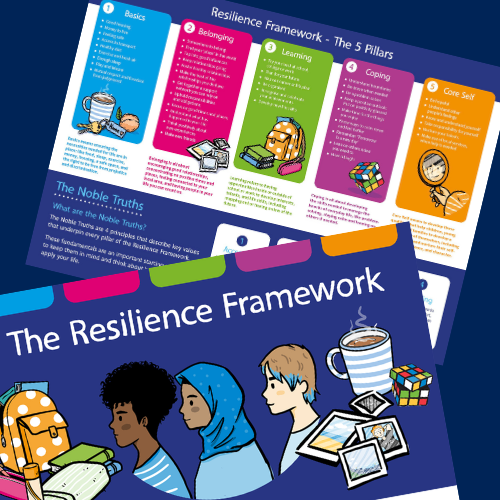Rocking resilience - an introduction to the Resilience Framework
What is Resilience?
‘Beating the Odds, while Changing the Odds’[1]
Resilience is ‘bouncing back’ from something that has been tough with the help of those around you. We call this ‘beating the odds’.
Resilience is stuff you can do for yourself (we call them ‘resilient moves’) but It is also focuses on what needs to be done to support you and all young people by:
- Those around you – like family / school / your communities
- And people like Cornwall Council*, and the government.
These people can have a role in making sure you have opportunities in life – education / skills, access to jobs and housing in the future and services that can support your wellbeing. This is the bit we call ‘changing the odds’.
[1] Thanks to our brilliant friends from Headstart in Blackpool for coming up with this fab way of describing resilience


* Here’s an example of what Cornwall Council is doing to ‘change the odds’.
There are 4 big priorities for the way the council wants to support people living in Cornwall (alongside all the usual stuff like emptying the bins and filling in potholes!)
1 of the 4 priorities is about YOU! It is:
“We want Cornwall to be a brilliant place to be a child and to grow up.”
That means action on education / housing / the environment / jobs / health etc. And we’re making sure that young people are being listened to and involved in making decisions about how we meet that priority. Talk to our Children's Rights Team about how you can get involved.
The Resilience Framework
The Resilience Framework is, simply, a handy guide to some great ‘resilient moves’ you can try. There are:
42 moves divided into 5 areas supported by 4 ‘Noble Truths’
Resilient Moves
A resilient move is an everyday action that can help you build resilience (and support your wellbeing). You are probably making lots of resilient moves already – you just might not have called them that before.


Using the Resilience Framework
We've put the Resilience Framework here so you can explore the different areas and all the resilient moves. We hope this helps you get more and get more familiar with the framework.
Have a look at the framework and see what resilient moves you are already making, or what you could easily start doing (and, if you need help, who can help).
You can start anywhere on the framework; you don’t have to do it in any particular order and you don’t have to do all the resilient moves.
You might find that there is a chain reaction, this is where you work on one resilient move and find you have achieved lots of others in the process.
A bit about the Noble Truths
The Noble Truths are four things that can help when making resilient moves:
Accepting - Accepting reminds you to accept where you are at and remember there are things you can control in your life.
Conserving - Even if things are tough, there is good stuff too. Conserving reminds you hang on to the good and remember that things can get better.
Commitment - If one of the resilient moves feels hard tell yourself “I’ve got this’, I can do this, I going to keep trying!”
Enlisting - You are not alone! Get support to make resilient moves – from family / school / friends /services. It’s OK to ask for help.
We hope you find the Resilience Framework helpful.

Acknowledgement: (The Resilience Framework originated from the research and work of Professor Angie Hart, Dr Derek Blincow and Helen Thomas in 2007. See www.boingboing.org.uk for further details).